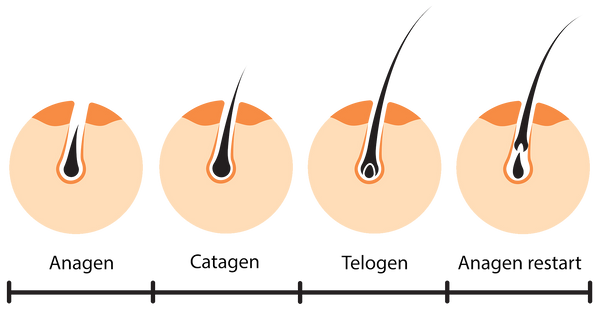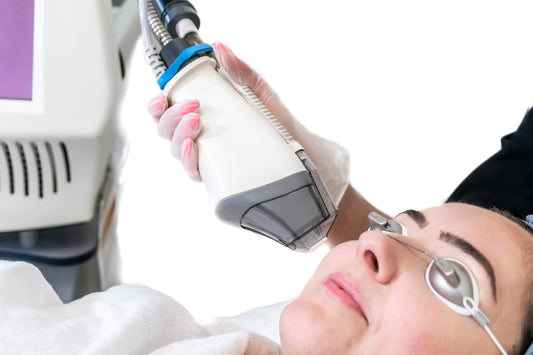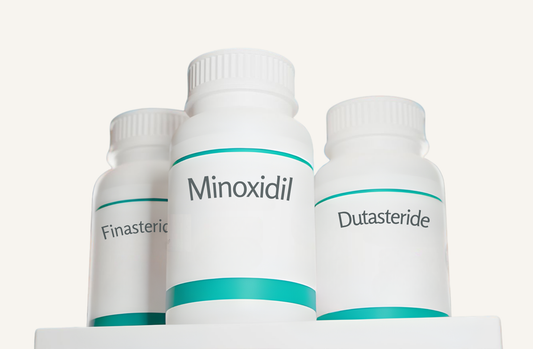We lose somewhere between 50 to 100 strands of hair a day and we have over 100,000 strands of hair and many more hair follicles. Each hair follicle on our head is going through a stage of growth.
What Causes Hair Loss?
- Medications
- Illnesses
- Anemia and thyroid disorders
- Hormone replacement or loss
- Skin problems like psoriasis
- Genetic conditions like androgenetic alopecia
- Chemical products like dyes and bleaches
- Age
- Menopause
- Stress
- Overstyling
- Sudden weight loss
- Environmental conditions
- Malnourishment or lack of essential vitamins
- Too much Vitamin A
- Pregnancy
How Much Hair Loss is Normal?
Hair typically grows about 6 inches per year. A person loses about 50 to 100 strands per day. Washing your hair can cause you to lose up to 250 strands at once, but not washing it doesn’t necessarily help stop hair loss.
Does Hair Ever Stop Growing?
Many people don’t know this, but hair can actually stop growing. Normally, this is only about 10% of your hair at any one time. The other 90% is still getting longer. There are three cycles of hair growth. The first growing cycle lasts from 2 to 8 years. Then that hair goes into a transition phase for two to three weeks. Each strand’s follicle shrinks. The non-growing phase is when your hair takes a break and rests for 2 to 4 months.
How Does Hair Grow?
A full, healthy head of hair consists of about 100,000 - 150,000 individual hairs, and only 90% of those hair follicles are usually in a stage of growth. The remaining is either resting or transitioning. Hair growth is divided into phases: anagen, catagen, and telogen.

-
Growing (anagen): Every hair on your head is constantly going through one of the three stages of the hair growth cycle. The first phase is a growth phase, called anagen, and it can last anywhere from 2 to 6 years. While in this phase, the group of cells at the base of the hair, called the dermal papilla, multiply rapidly. As new cells form, the old ones move upward, creating the hair you see. The longer it lasts, the longer the hair grows. Normally, around 80 to 85 percent of the hairs on the head are in this phase.
-
Transitioning (catagen): The cells at the base of the hair stop multiplying, the hair stops growing, and it enters into catagen or the transition phase. This part of the hair growth cycle only lasts from 2 to 3 weeks. It allows the hair follicle to renew itself.
-
Resting (telogen): Finally, the hair enters a resting phase called telogen. The follicle lies dormant for 1 to 4 months. Normally between 12 and 20 percent of hairs are in this phase. Under times of tremendous stress, many follicles can be “shocked” into this phase simultaneously and then shed in a short period (telogen effluvium).
- Growing again (anagen): After the hair has been shed, a new hair begins to grow, and the cycle repeats itself — through anagen, catagen, and telogen — for each hair follicle on your head for as long as it is active.
What is Male Pattern Hair Loss?
Male pattern hair loss, or androgenetic alopecia (AGA), is the most common type of hair loss among males. Hormonal factors appear to play a role, especially a male sex hormone known as dihydrotestosterone (DHT).
- Hair loss affects around half of all men over the age of 50 years, and around 50 million men in the United States.
- Male pattern hair loss is the most common type of hair loss in men. Hair at the temples and on the crown slowly thins and eventually disappears. The exact reason why this happens is unknown, but genetic, hormonal, and environmental factors are all thought to play a role. DHT is believed to be a major factor.
- Male pattern hair loss happens when the follicles slowly become miniaturized, the anagen phase is reduced, and the telogen phase becomes longer.
- Over time, the anagen phase becomes so short that the new hairs do not even peek through the surface of the skin. Telogen hair growth is less well-anchored to the scalp, making it easier to fall out.
- As the follicles become smaller, the shaft of the hair becomes thinner with each cycle of growth. Eventually, hairs are reduced to vellus hairs, the type of soft, light hairs you can see on infants and they mostly disappear during puberty in response to androgens.
How Does DHT Affect Hair Growth?
The hair on the head grows without the presence of DHT, but armpit hair, pubic hair, and beard hair cannot grow without androgens. DHT is a normal part of male physiology and is important for development. While blocking conversion of testosterone to DHT with pharmaceuticals like finasteride can be useful for hair loss in men, this is associated with sexual side effect. Natural ingredients like saw palmetto and lycopene have similar effects but their efficacy compared to finasteride is low. Consult with a board certified dermatologist if you would like to explore finasteride treatment.




